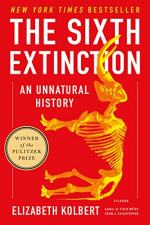
|
| Name: _________________________ | Period: ___________________ |
This test consists of 15 multiple choice questions and 5 short answer questions.
Multiple Choice Questions
1. How much did it cost to feed Suci ficus leaves a year?
(a) Nearly $100,000.
(b) $75,000.
(c) About $50,000.
(d) $85,000.
2. In 1984 when conservationists gathered in Singapore to work out a Sumatran rhino rescue strategy, how many rhinos were caught for a captive breeding program?
(a) 12.
(b) 35.
(c) 40.
(d) 17.
3. According to American naturalists, Carl and Marian Rettenmeyer, how many species did they discover that lived in association with "Eciton burchellii" army ants?
(a) 300.
(b) 250.
(c) 50.
(d) 80.
4. How many different species might be involved in building a coral reef?
(a) 50.
(b) 500.
(c) 35.
(d) 100.
5. What did Paabo's team received as an award for a paper they published in "Science" in May 2010?
(a) $75,000.
(b) $25,000.
(c) $30,000.
(d) $50,000.
6. How many miles separated Galapagos from the coast of South America?
(a) 350.
(b) 500.
(c) 450.
(d) 250.
7. How many Sumtran rhinos were born at the Cincinnati Zoo?
(a) 2.
(b) 3.
(c) 4.
(d) 1.
8. What was the second-largest coral reef located?
(a) Off the coast of Belize.
(b) Caribbean.
(c) Indian ocean.
(d) Red Sea.
9. When was it believed that the Neanderthal vanished?
(a) 30,000 years ago.
(b) 15,000 years ago.
(c) 20,000 years ago.
(d) 25,000 years ago.
10. How much Denisovan DNA did contemporary New Guineans carry?
(a) 3 percent.
(b) Up to 6 percent.
(c) About 4 percent.
(d) 1 percent.
11. What was on the ground at One Tree Island?
(a) Black dirt.
(b) Lava stones.
(c) Sand.
(d) Coral rubble.
12. During the statary phase when ants stay mostly in one place to raise a new generation, how long might the ants stay put?
(a) 2 months.
(b) 3 weeks.
(c) 2 weeks.
(d) 1 month.
13. When was the best time to take a bat census?
(a) Summer.
(b) Fall.
(c) Winter.
(d) Spring.
14. How tall did the Arctic willow grow on Ellesmere?
(a) Chest high.
(b) As high as your ankle.
(c) Waist high.
(d) Knee high.
15. When was the last known Javan rhino in Vietnam killed?
(a) 2007.
(b) 2003.
(c) 2009.
(d) 2010.
Short Answer Questions
1. When Acropora millepora spawned, how many sperm were in each egg-sperm bundle?
2. How many species of birds were estimated to live in the entire world?
3. At the time the author visited BDFFP, how many scientific papers had been written about the area?
4. If an ocean current flowed about one mile per hours, in six week, how far could a seed be carried?
5. When the author visited Reserve 1202, where was the graduate student from who was studying bats?
|
This section contains 340 words (approx. 2 pages at 300 words per page) |

|




